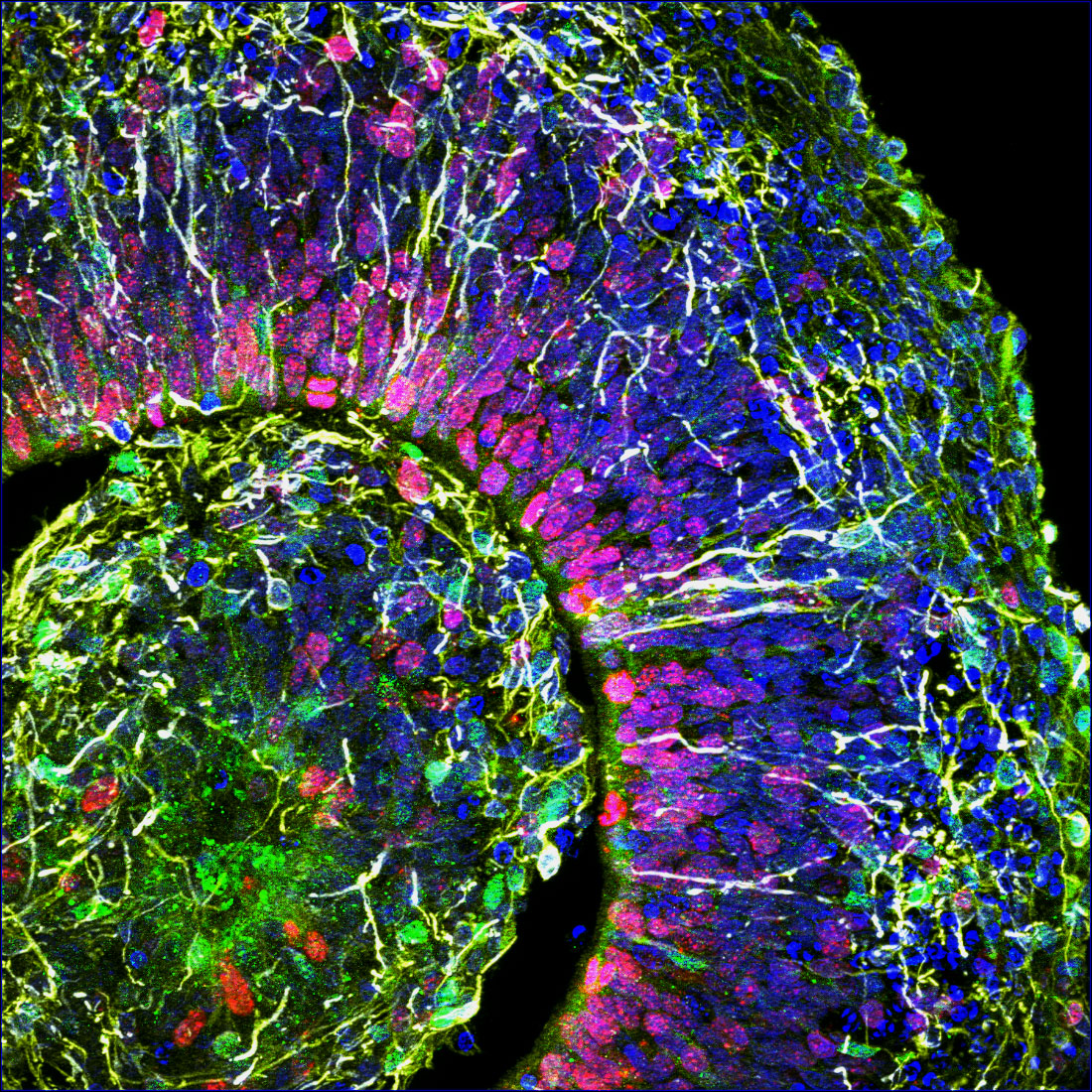Media Release
From: Cell PressPeer-reviewed Experimental Study Cells
Brain waves detected in mini-brains grown in a dish
Scientists have created miniature brains from stem cells that developed functional neural networks. Despite being a million times smaller than human brains, these lab-grown brains are the first observed to produce brain waves that resemble those of preterm babies. The study, published August 29 in the journal Cell Stem Cell, could help scientists better understand human brain development.
"The level of neural activity we are seeing is unprecedented in vitro," says AlyssonMuotri, a biologist at the University of California, San Diego. "We are one step closer to have a model that can actually generate these early stages of a sophisticated neural network."
The pea-sized brains, called cerebral organoids, are derived from human pluripotent stem cells. By putting them in culture that mimics the environment of brain development, the stem cells differentiate into different types of brain cells and self-organize into a 3D structure resembling the developing human brain.
Scientists have successfully grown organoids with cellular structures similar to those of human brains. However, none of the previous models developed human-like functional neural networks. Networks appear when neurons are mature and become interconnected, and they are essential for most brain activities.
"You can use brain organoids for several things, including understand normal human neurodevelopment, disease modeling, brain evolution, drug screening, and even to inform artificial intelligence," Muotri says.
Muotri and colleagues designed a better procedure to grow stem cells, including optimizing the culture medium formula. These adjustments allowed their organoids to become more mature than previous models. The team grew hundreds of organoids for 10 months and used multi-electrode arrays to monitor their neural activities.
The team began to detect bursts of brain waves from organoids at about two months. The signals were sparse and had the same frequency, a pattern seen in very immature human brains. As the organoids continued to grow, they produced brain waves at different frequencies, and the signals appeared more regularly. This suggests the organoids have further developed their neural networks.
"This is a result of having more functional synapses, and you are forming more connections between the neurons," Muotri says. The interactions between neurons contribute to signals at various frequencies, he says.
To compare the brain wave patterns of organoids with those of human brains early in development, the team trained a machine learning algorithm with brain waves recorded from 39 premature babies between six and nine-and-a-half months old. The algorithm was able to predict how many weeks the organoids have developed in culture, which suggests these organoids and human brain share a similar growth trajectory.
However, it's not likely these organoids have mental activities, such as consciousness, Muotri says. "The organoid is still a very rudimentary model--we don't have other brain parts and structures. So these brain waves might not have anything to do with activities in real brains."
"It might be that in the future, we will get something that is really close to the signals in the human brains that control behaviors, thoughts, or memory," Muotri says. "But I don't think we have any evidence right now to say we have any of those."
Looking forward, the team aims to further improve the organoids and use them to understand diseases associated with neural network malfunctioning, such as autism, epilepsy, and schizophrenia.
"As a scientist, I want to get closer and closer to the human brain," Muotri says. "I want to do that because I see the good in it. I can help people with neurological conditions by giving them better treatments and better quality of life. But it's up to us to decide where the limit is. It might be that the technology is not ready yet, or we don't know how to control the technology. This is the same kind of discussion around CRISPR in babies, and that's why we have ethics committees to represent all parts of the society."



Expert Reaction
These comments have been collated by the Science Media Centre to provide a variety of expert perspectives on this issue. Feel free to use these quotes in your stories. Views expressed are the personal opinions of the experts named. They do not represent the views of the SMC or any other organisation unless specifically stated.